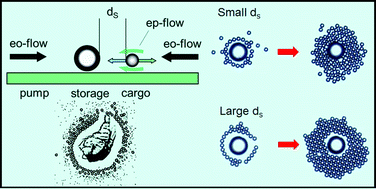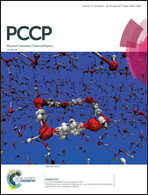Controlled assembly of single colloidal crystals using electro-osmotic micro-pumps†
Abstract
We assemble charged colloidal spheres at deliberately chosen locations on a charged unstructured glass substrate utilizing ion exchange based electro-osmotic micro-pumps. Using microscopy, a simple scaling theory and Brownian dynamics computer simulations, we systematically explore the control parameters of crystal assembly and the mechanisms through which they depend on the experimental boundary conditions. We demonstrate that crystal quality depends crucially on the assembly distance of the colloids. This is understood as resulting from the competition between inward transport by the electro-osmotic pump flow and the electro-phoretic outward motion of the colloids. Optimized conditions include substrates of low and colloids of large electro-kinetic mobility. Then a sorting of colloids by size is observed in binary mixtures with larger particles assembling closer to the ion exchanger beads. Moreover, mono-sized colloids form defect free single domain crystals which grow outside a colloid-free void with facetted inner crystal boundaries centered on the ion exchange particle. This works remarkably well, even with irregularly formed ion exchange resin splinters.



 Please wait while we load your content...
Please wait while we load your content...